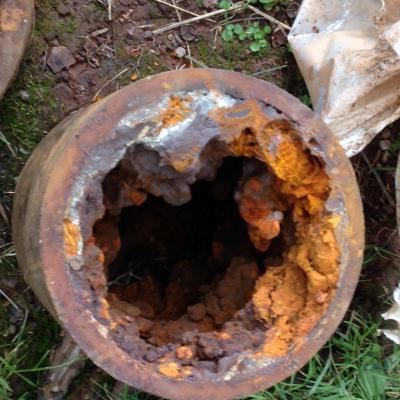Ein besserere Methode zur Reinigung und Relining von Rohrleitungen

Cleaning and relining old water pipes is a widely used method used by utility companies to extend the life of underground water pipes. Why cleaning and relining? Over time, the build-up of iron build-up in a water pipe, especially in small diameter pipes, can reduce water capacity. Eliminating tuberculation will help improve water flow while the liner will help prevent future buildup of lime and may help increase structural strength, depending on the type of liner. However, this can be an expensive and time consuming process. What if there was a better way to help utilities and water utility operators determine the right class of liner and reduce project costs? That gives - the ePulse® condition assessment technology.
"Cleaning and relining a water pipe works like scrubbing the inner wall with coarse pads and finishing the walls with a thin cement mortar coating," explains John Marciszewski, Business Development Director at Echologics. "The process eliminates the accumulated tuberculation and corrosion, but also reduces the original pipe wall thickness. Our ePulse® technology can detect if the process has compromised the structural integrity of the pipe so badly that it can no longer withstand the stress of high operating pressures under load can.
One major water utility commented that "Echologics' technology is now a proven tool in our toolbox and pipe replacement is not a green" alternative - on an annual basis we are definitely saving hundreds of thousands of dollars with ePulse technology. The capital requirements are high and we have many needs. Using new technologies like this one enables us to understand where we can most effectively use our capital resources and where they will most benefit our customers. "
The key to success is choosing a pipe condition assessment technology that is non-invasive and stays out of the water column. This enables a water utility to quickly inspect a large part of its water supply network and to obtain meaningful information to optimize pipe cleaning and lining effort.
Written by: Mike Stadnyckyj
